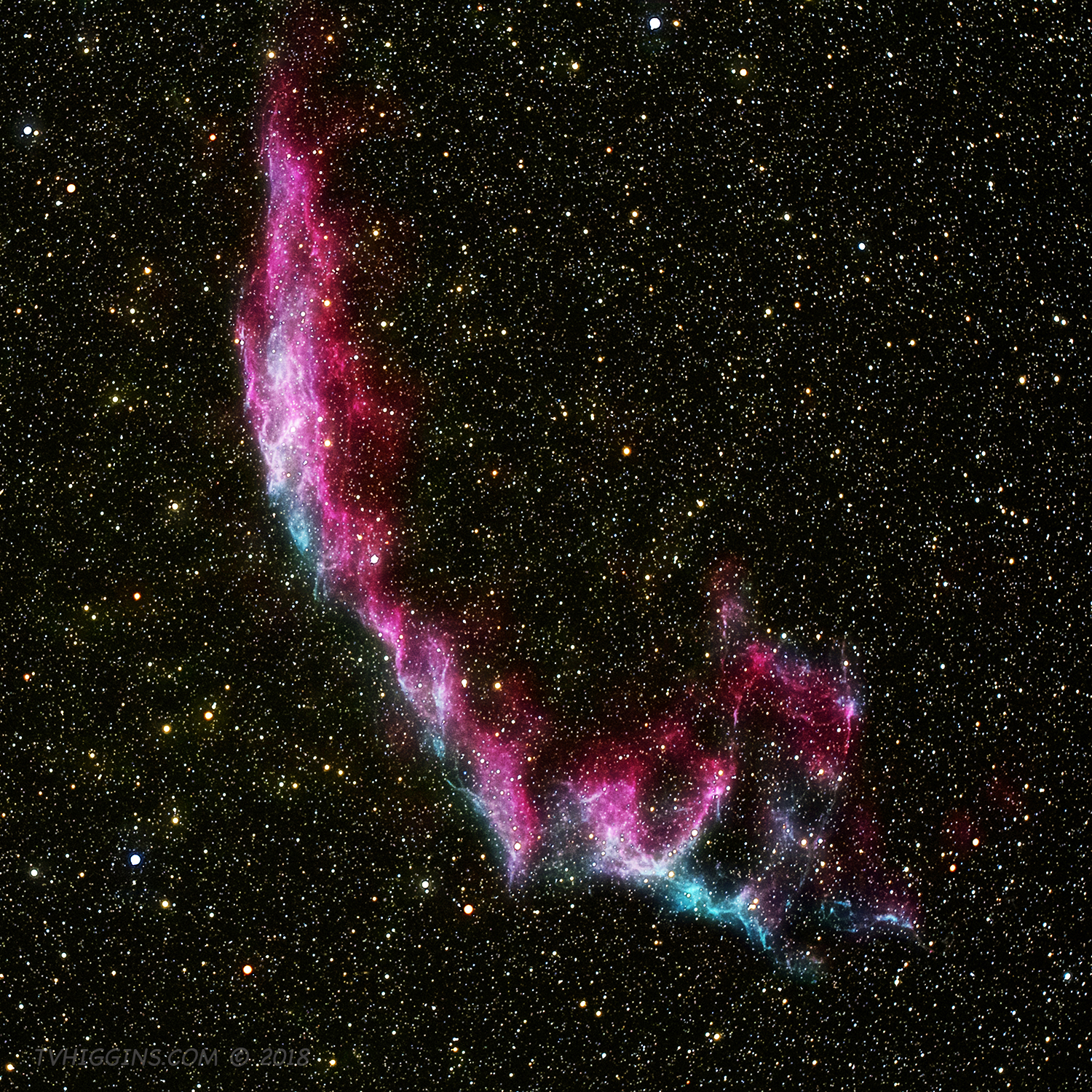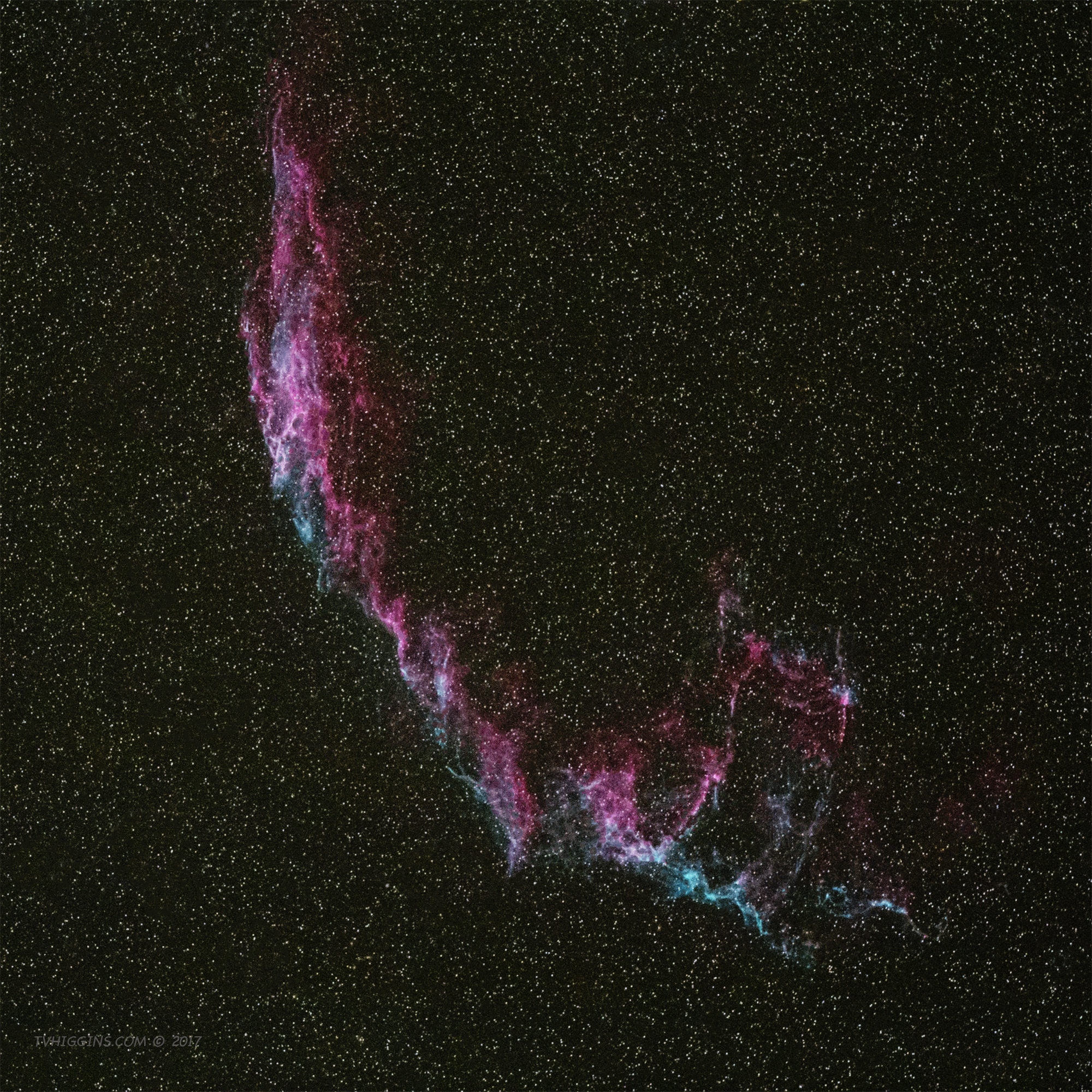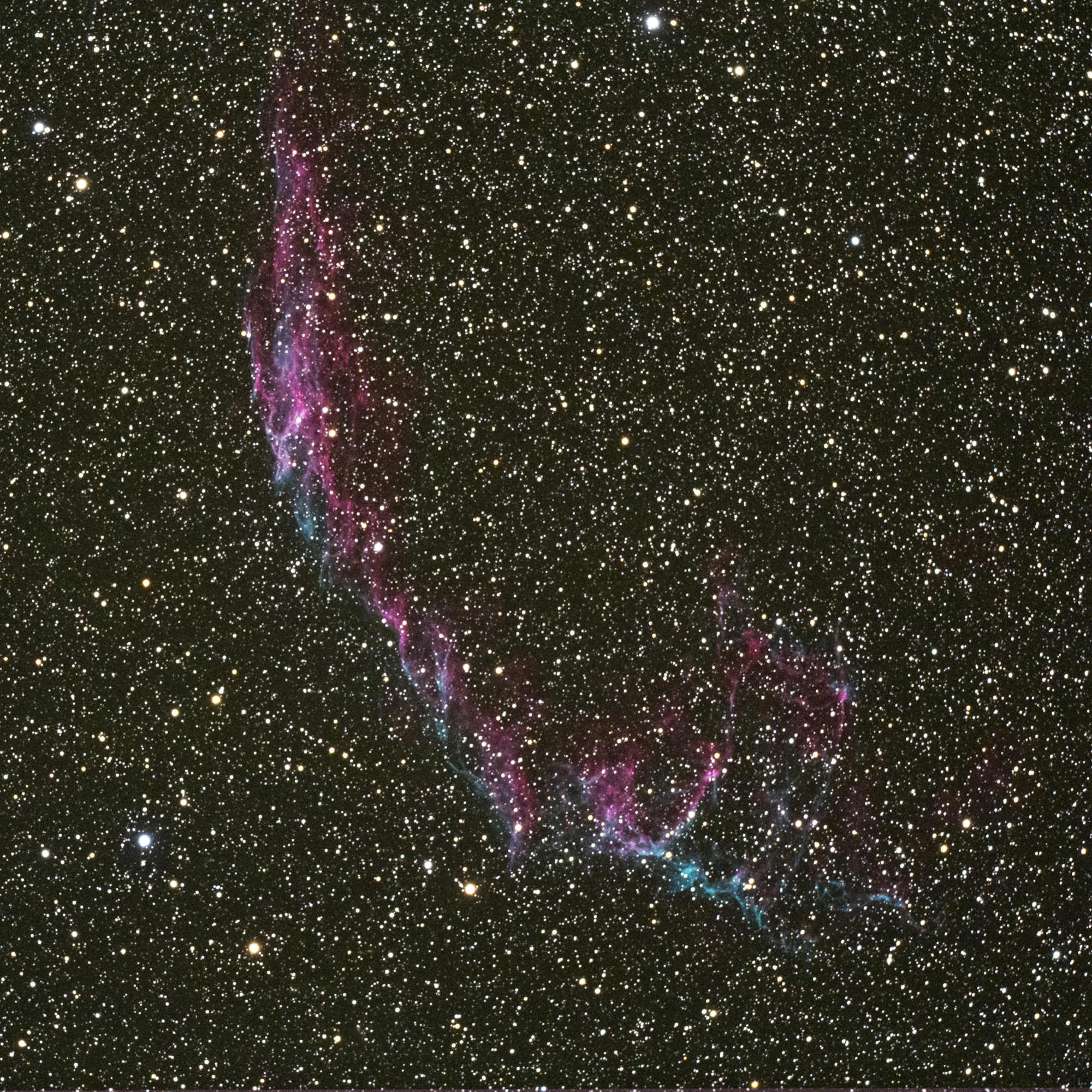Veil Nebula Revisited
- Telescope: Stellarvue SVA130T-IS
- Mount: Losmandy G-11 with Gemini 2 controller
- Autoguiding: Yes
- Optical Configuration: 0.72x field flattener & reducer (f/5)
- Camera: Canon 60Da
- Light Frames: 25, 5-min. exposures
- Calibration: None (no darks, no flats, no biases)
- Exposure Time: 125 min. (25 x 5 min.)
- ISO: 1250
- Processing: Photoshop CC
- Imaging Location: Prairie City, Ore.
As mentioned in a previous post, the Veil Nebula poses something of a challenge for astrophotographers. Located in a dense star field in the constellation Cygnus, this relatively dim emission nebula must compete for attention among thousands of stars. But Papa’s got a new bag of tricks, so it’s not much of a competition anymore.
The above image was processed with the same imaging data used for the original images posted in September 2017 (https://tvhiggins.com/astroimaging/the-east-veil-nebula-ngc-6992/), but the results are very different.


